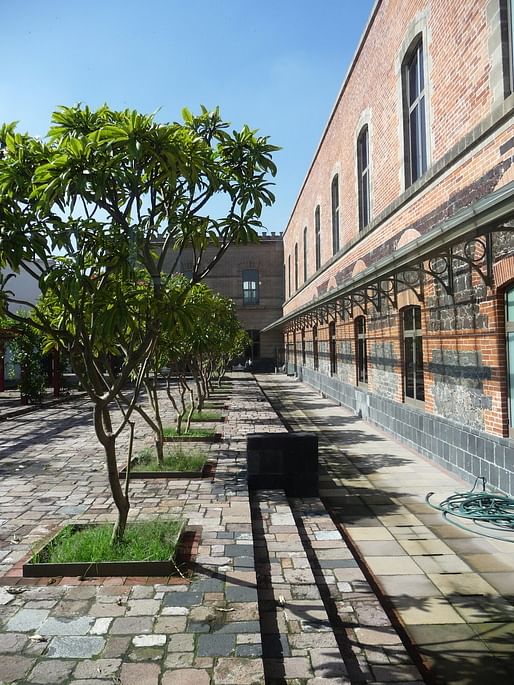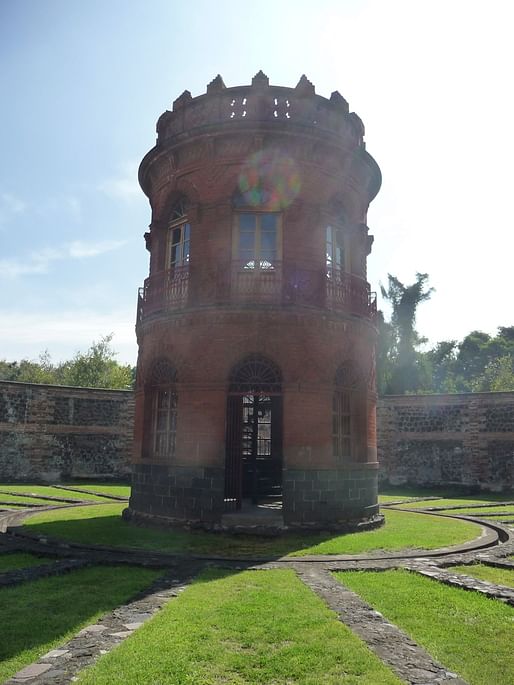
May '13 - Feb '16
Monday was a national holiday to celebrate Independence, so instead of going into work, I donned my giant fiesta sombrero and trucked out to Reforma for the big military parade.
I joined huge crowds along the parade route, and grabbed a spot on top of the ecobici (shared public bikes) rack so I could sit and then stand (precariously) when the parade started. Almost everyone there had a green baseball cap that was being handed out by young volunteers, so it was a sea of green hats and campesino sombreros.


In addition to the tens of thousands of Mexican Army troops marched by, I was particularly interested in the support vehicles. There were a few tractors-trailers pulling cooking trailers, and of course, the mobile tortilladora operation which had its own trailer.


The other surprise from the parade was the Environmental Protection Brigade. These soldiers were armed with planting tools and hard hats, and they drove by with two open trailers with three stacked trays of saplings. It makes me wonder about the nature of the brigade. In the US, the armed forces are one of the biggest polluters in the country since their environmental damage isn't heavily scrutinized. A truthfully environmental protection brigade would actually be more like the EPA- military officials and bureaucrats.
The saplings and apparent arbolists made me think they are probably more like a Environmental Restoration brigade. Maybe they replant hillsides to stabilize them after mudslides, or repair areas torn up by military exercises. Or it's just a clever PR stunt. 

Tuesday, I went to jail.
Since I'd been reading up on the war Mexican of independence and the wars of revolution, I decided to go see the Lecumberri prison, the infamous Black Palace constructed by Porfirio Diaz in 1888 to house all the criminals and dissidents his Order campaign could arrest.
American biographer of Mexico City John Ross explains that "Don Porfirio enlisted the best minds of his times, the Cientficos, to design a more "scientific" penitentiary that would "rehabilitate" and not exterminate his prisoners. The palace of Lecumberri in the east of the city beyond San Lazaro was reconditioned along principals pioneered by the Quakers in Philadelphia. Seven wings of cellblocks spoked off from a central command post and inmates were allocated individual cells, the better to contemplate thier repentance."
This rehabilitative prison apparently "soon degenerated into a cruel instrument of state repression. Prisoners were spread-eagled on the bars and tortured, their fingernails torn out by pliers." (El Monstruo, 2009)
Would-be prison designers take note- the architect of the prison found himself incarcerated within its walls shortly after its inauguration.
The elected president of Mexico, Madero and his vice president, Pino Suarez, were both murdered outside of its walls- they were shoved out of the car they were being transported in, and shot in the back. Would-be Mexican politicians, also take note.
The prison held many notables in Mexican history. Franciso "Pancho" Villa was one of the few men to escape. Painter and activist Siqueiros, whose workshop in Cuernavaca I recently visited, was also jailed there. So were many of the student protesters who survived the Tlatelolco massacre of '68.
Since closing in the 1980's, it has found reuse as the national archives- the radial arms of cellblocks now house reading rooms and media centers and the cells now contain shelves of books and documents. It was interesting to visit- it still feels like a prison, despite the glass and the light. There were also two small panopticon jail blocks, probably for extra security prisoners or isolation. Without a real excuse to get into the archive halls, I had to content myself with photos from the massive hub of the radial prison, and views of the outside.





Passing through the main entry hall, a high, brick walled cube of space, you can taste the stark, forbidding atmosphere. Newer architects who have adapted the rest of the complex to its current state, with gardens and exhibition halls, have erased the memory of brutality, which was perhaps the political motivation for the adaptive reuse.
The only thing which hints at the fear and brutality of the Black Palace is its urban legacy. Near the dense and lively heart of one of the most populous cities in the world, there are no buildings, no street life, few pedestrians- the urban fabric still recoils in horror from the prison walls.

Urban and architectural explorations from Mexico City to Stuttgart Germany through the eyes of a iterant architectural designer
No Comments
Block this user
Are you sure you want to block this user and hide all related comments throughout the site?
Archinect
This is your first comment on Archinect. Your comment will be visible once approved.